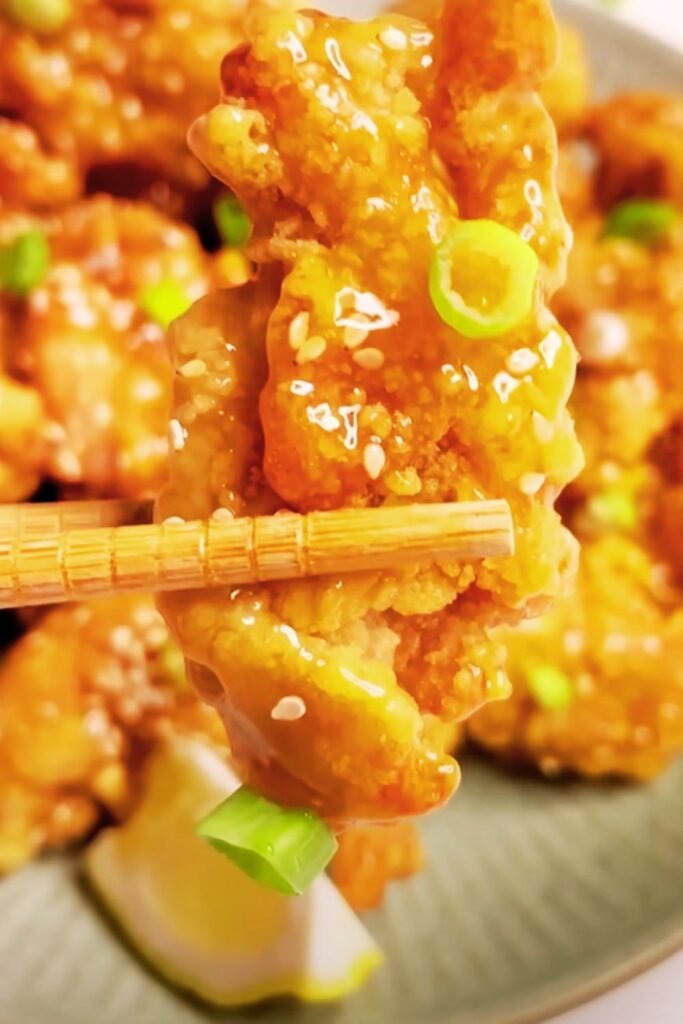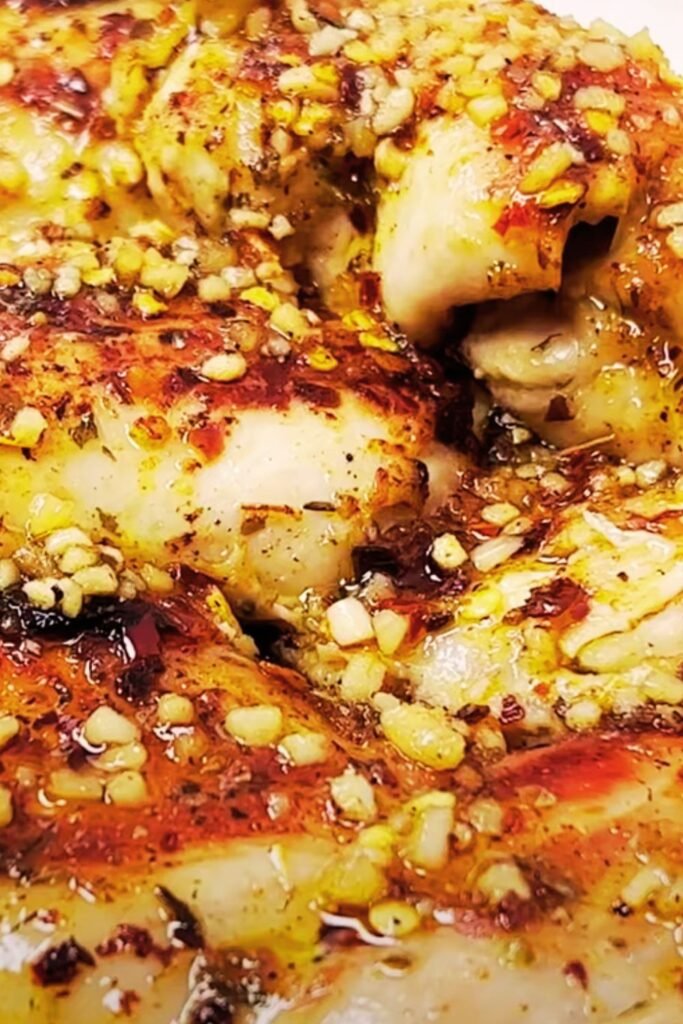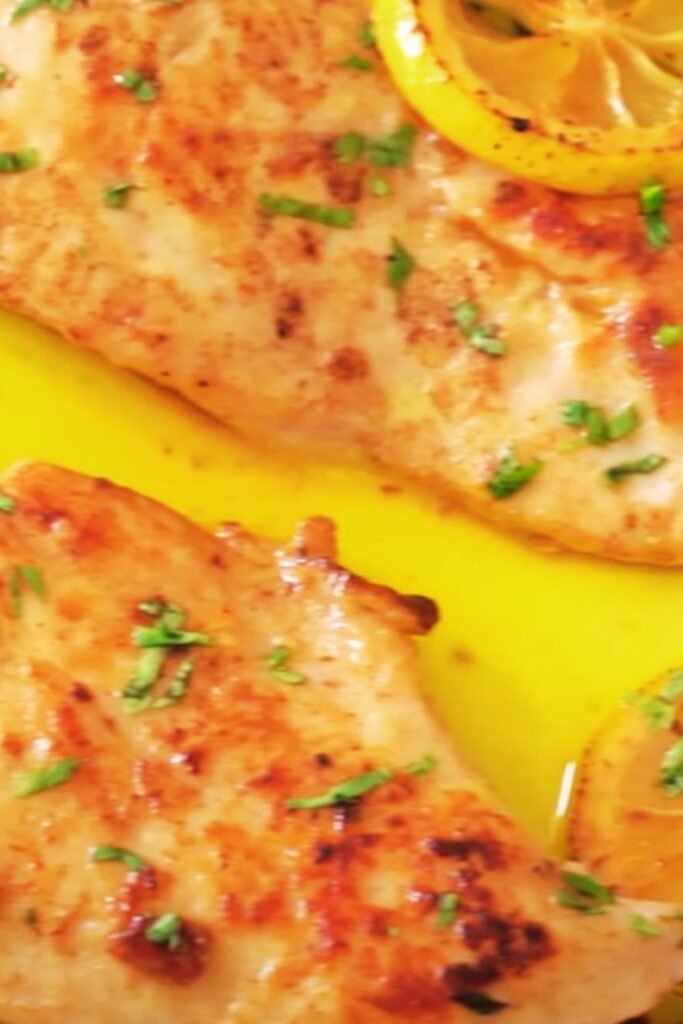There’s something magical about a recipe that delivers restaurant-quality flavors while requiring just one pan and minimal cleanup. My one skillet lemon garlic chicken has become my go-to weeknight dinner solution, combining tender, juicy chicken with bright citrus notes and aromatic garlic in a way that never fails to impress my family and guests.
I discovered this recipe during one of those hectic weeks when I desperately needed something delicious but didn’t have the energy for elaborate cooking. What started as a simple experiment with ingredients I had on hand has evolved into one of my most requested dishes. The beauty lies not just in its simplicity, but in how the flavors develop and meld together in that single skillet, creating layers of taste that seem far more complex than the straightforward preparation suggests.
What Makes This Recipe Special
Unlike traditional chicken dishes that require multiple pots and pans, this one skillet wonder streamlines the entire cooking process without compromising on flavor. The technique I use creates a beautiful golden crust on the chicken while keeping the interior incredibly moist. The lemon garlic sauce that develops in the same pan becomes a luxurious coating that elevates simple chicken thighs or breasts into something truly spectacular.
I’ve served this dish to dinner parties where guests assumed I’d spent hours in the kitchen, when in reality, the active cooking time is less than 30 minutes. The secret lies in understanding how to layer flavors and use the fond (those beautiful brown bits) that develop in the pan to create a sauce that tastes like it’s been simmering for hours.
Essential Ingredients Breakdown
Protein Foundation
Chicken Selection: I prefer using bone-in, skin-on chicken thighs for this recipe because they remain incredibly juicy and develop the most flavorful crispy skin. However, I’ve successfully adapted this recipe for boneless skinless thighs, chicken breasts, and even drumsticks.
Quality Matters: I always choose organic, free-range chicken when possible. The difference in flavor is noticeable, and the meat tends to be more tender with better texture.
The Flavor Trinity
Fresh Garlic: Nothing beats fresh garlic for this recipe. I use at least 6-8 cloves, minced finely to ensure even distribution. The garlic becomes sweet and mellow as it cooks, infusing the oil with incredible aroma.
Lemon Components: I use both fresh lemon juice and zest in this recipe. The zest provides bright, citrusy oils that complement the acidity of the juice. I always zest before juicing and use organic lemons when possible to avoid any wax residue.
Fresh Herbs: Thyme and rosemary are my preferred herbs, though oregano works beautifully too. Fresh herbs make a significant difference in the final flavor profile.

Supporting Cast
Olive Oil: Extra virgin olive oil provides the best flavor foundation. I use enough to create a good sear but not so much that the dish becomes greasy.
Butter: I finish the sauce with a knob of cold butter, which creates a silky, restaurant-quality texture and adds richness that ties everything together.
White Wine or Chicken Broth: This deglazes the pan and adds depth. I prefer dry white wine, but chicken broth works excellently for those avoiding alcohol.
Detailed Cooking Method
Preparation Phase (10 minutes)
I start by bringing the chicken to room temperature, which takes about 30 minutes. This ensures even cooking throughout. While waiting, I prep all other ingredients because once the cooking starts, everything moves quickly.
Seasoning Strategy: I generously season the chicken with salt and freshly ground black pepper at least 15 minutes before cooking. This allows the seasoning to penetrate the meat rather than just sitting on the surface.
Pan Selection: I use a heavy-bottomed stainless steel or cast-iron skillet that’s large enough to accommodate all chicken pieces without overcrowding. Overcrowding leads to steaming instead of searing, which prevents that beautiful golden crust from forming.
The Searing Process (8-10 minutes)
I heat the oil over medium-high heat until it shimmers but doesn’t smoke. The chicken goes skin-side down first, and here’s where patience becomes crucial. I resist the urge to move or flip the chicken too early. When the skin releases easily from the pan and has developed a beautiful golden-brown color, it’s ready to flip.
Temperature Control: Maintaining the right temperature is key. Too hot, and the outside burns before the inside cooks. Too low, and you won’t achieve that coveted crispy skin.
Building the Sauce (5-7 minutes)
After removing the chicken, I reduce the heat to medium and add the minced garlic to the same pan. The residual fat and those beautiful brown bits (fond) create an incredible flavor base. I cook the garlic just until fragrant, about 30 seconds, being careful not to burn it.
Deglazing Magic: Adding the wine or broth creates an immediate sizzle that lifts all those flavorful bits from the bottom of the pan. I scrape with a wooden spoon to incorporate everything into the developing sauce.

Final Assembly (10-12 minutes)
I return the chicken to the pan, nestling it into the sauce. The fresh lemon juice and herbs go in at this stage, and I let everything simmer together, allowing the flavors to meld while the chicken finishes cooking.
Temperature Check: I always use a meat thermometer to ensure the internal temperature reaches 165°F (74°C) for food safety while maintaining juiciness.
Nutritional Benefits and Health Information
| Nutrient | Per Serving | % Daily Value | Health Benefits |
|---|---|---|---|
| Protein | 42g | 84% | Muscle maintenance, satiety |
| Vitamin C | 25mg | 28% | Immune support, iron absorption |
| Selenium | 35mcg | 64% | Antioxidant properties |
| Niacin (B3) | 18mg | 90% | Energy metabolism |
| Phosphorus | 320mg | 32% | Bone health |
| Potassium | 450mg | 13% | Heart health, blood pressure |
This dish provides high-quality complete protein while being relatively low in carbohydrates. The lemon adds vitamin C and bright flavor without additional calories, while garlic provides antioxidant compounds that support immune function.
Cooking Time and Temperature Guide
| Cooking Stage | Time | Temperature | Key Indicators |
|---|---|---|---|
| Room Temperature Rest | 30 min | Room temp | Even cooking preparation |
| Initial Sear | 4-5 min | Medium-high | Golden crust formation |
| Flip and Sear | 3-4 min | Medium-high | Second side browning |
| Garlic Sauté | 30 sec | Medium | Fragrant, not brown |
| Deglazing | 1-2 min | Medium | Fond incorporation |
| Final Simmer | 10-12 min | Medium-low | Internal temp 165°F |
| Rest Period | 3-5 min | Off heat | Juice redistribution |
Flavor Variations I Love
Mediterranean Twist
I add Kalamata olives, sun-dried tomatoes, and feta cheese during the final simmer. The briny olives and tangy cheese create a completely different flavor profile while maintaining the dish’s simplicity.
Herb Garden Version
Using a combination of fresh basil, oregano, and parsley instead of thyme and rosemary creates a more Italian-inspired dish. I sometimes add a splash of balsamic vinegar for extra depth.
Spicy Kick
A pinch of red pepper flakes or a diced jalapeño added with the garlic brings heat without overwhelming the lemon-garlic foundation. This version pairs beautifully with cooling yogurt-based sides.

Perfect Side Dish Pairings
Starch Companions: Creamy mashed potatoes, buttery rice pilaf, or crusty artisan bread all work wonderfully to soak up the delicious sauce. I particularly love serving this over cauliflower rice for a lighter, low-carb option.
Vegetable Partners: Roasted asparagus, sautéed spinach, or a simple arugula salad dressed with olive oil and lemon complement the chicken’s flavors without competing. Green beans almondine is another favorite that adds both color and texture contrast.
Grain Options: Quinoa, farro, or wild rice provide nutty flavors and interesting textures that pair beautifully with the bright, citrusy sauce.
Storage and Meal Prep Tips
This recipe stores exceptionally well, making it perfect for meal planning. I often double the batch on Sunday and portion it for the week ahead.
Refrigeration: Stored in airtight containers, this dish keeps for up to 4 days in the refrigerator. I find the flavors actually improve after a day, as everything has time to meld together.
Freezing Guidelines: The cooked chicken freezes well for up to 3 months. I portion it into individual servings before freezing for easy weeknight reheating.
Reheating Method: I gently reheat in a covered skillet over low heat, adding a splash of chicken broth or water if needed to loosen the sauce. The microwave works in a pinch, but stovetop reheating preserves the texture better.
Troubleshooting Common Issues
Dry Chicken: This usually results from overcooking. Using a meat thermometer prevents this issue, and remember that chicken continues cooking slightly after removing from heat.
Burnt Garlic: If the garlic browns too quickly, reduce the heat immediately and add the liquid to stop the cooking process. Burnt garlic adds bitter flavors that can’t be corrected.
Watery Sauce: If the sauce seems thin, remove the chicken and simmer the liquid uncovered until it reduces to your desired consistency. The butter finish also helps thicken the sauce naturally.
Professional Kitchen Secrets
I learned several techniques from restaurant kitchens that elevate this home dish:
Cold Butter Finish: Adding cold butter at the end creates what chefs call “mounting” the sauce. This technique adds gloss and richness while helping to bind the sauce components.
Resting Importance: Letting the chicken rest after cooking allows the juices to redistribute throughout the meat, ensuring every bite is moist and flavorful.
Pan Temperature: Professional cooks test pan temperature by flicking water droplets onto the surface. The right temperature causes water to dance and evaporate quickly without violent sputtering.
Seasonal Adaptations
Spring Version: I add fresh peas and asparagus during the final simmer, along with fresh mint for a bright, seasonal twist.
Summer Variation: Cherry tomatoes and fresh basil transform this into a lighter, garden-fresh meal perfect for warm evenings.
Fall Adaptation: Adding butternut squash cubes and sage creates a hearty, comfort-food version that’s perfect for cooler weather.
Winter Comfort: Root vegetables like carrots and parsnips, along with heartier herbs like rosemary, make this dish more warming and substantial.
Wine and Beverage Pairings
While I don’t include alcoholic suggestions, this dish pairs beautifully with sparkling water infused with lemon and herbs. Fresh lemonade, iced tea, or even a sophisticated mocktail using fresh herbs and citrus complement the flavors perfectly.
For non-alcoholic sophistication, I love serving sparkling grape juice in wine glasses, which adds elegance to the dining experience without the alcohol.
Questions and Answers
Q: Can I use boneless, skinless chicken breasts instead of thighs? Yes, absolutely! Chicken breasts work well, but watch the cooking time carefully as they can dry out more quickly than thighs. I reduce the cooking time by about 3-4 minutes and check for doneness with a thermometer.
Q: What if I don’t have fresh lemons available? While fresh lemons provide the best flavor, you can substitute bottled lemon juice in a pinch. Use about 2/3 the amount of bottled juice since it’s typically more concentrated. However, you’ll miss the bright oils from fresh zest.
Q: How can I make this recipe dairy-free? Simply omit the butter finish or substitute it with additional olive oil. You can also use vegan butter alternatives that melt well and provide similar richness.
Q: Can I prepare this recipe in advance? You can prep all ingredients ahead of time, but I recommend cooking it fresh for the best texture. The chicken can be seasoned and the vegetables prepped up to a day in advance.
Q: What’s the best way to prevent the garlic from burning? Keep the heat at medium when adding garlic, and have your liquid ready to add quickly. Garlic goes from perfectly golden to burnt very quickly, so timing is crucial.
Q: Can I double this recipe for a larger crowd? Yes, but you might need two skillets to avoid overcrowding. Alternatively, you can use a large roasting pan and finish it in the oven at 375°F after the initial searing.
Q: How do I know when the chicken skin is crispy enough? The skin should be golden brown and release easily from the pan when gently lifted with tongs. If it sticks, it needs more time to develop that perfect crust.
Q: What can I substitute for white wine in the recipe? Chicken broth, vegetable broth, or even water with a splash of white wine vinegar work well. Each option provides slightly different flavor depths but all create delicious results.
Q: How long should I let the chicken rest at room temperature? About 30 minutes is ideal. This ensures even cooking throughout the meat. If you’re short on time, even 15 minutes helps significantly.
Q: Can I use dried herbs instead of fresh? Yes, but use about 1/3 the amount since dried herbs are more concentrated. Add them earlier in the cooking process to allow time for their flavors to bloom and develop.
This one skillet lemon garlic chicken recipe has become more than just a meal in my kitchen—it’s a reliable friend that never disappoints. Whether I’m cooking for my family on a busy weeknight or entertaining guests who expect something special, this dish delivers every time. The combination of simplicity and sophistication makes it perfect for both novice cooks building confidence and experienced home chefs looking for efficiency without sacrificing flavor.
The beauty of this recipe lies in its adaptability and the way it transforms simple, accessible ingredients into something truly memorable. Each time I make it, I’m reminded of why the best recipes aren’t always the most complicated ones, but rather those that bring people together around the table with satisfied smiles and requests for seconds.